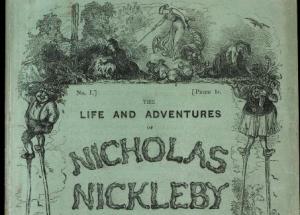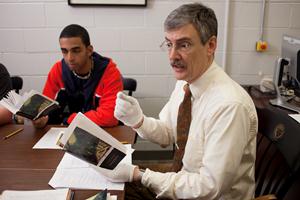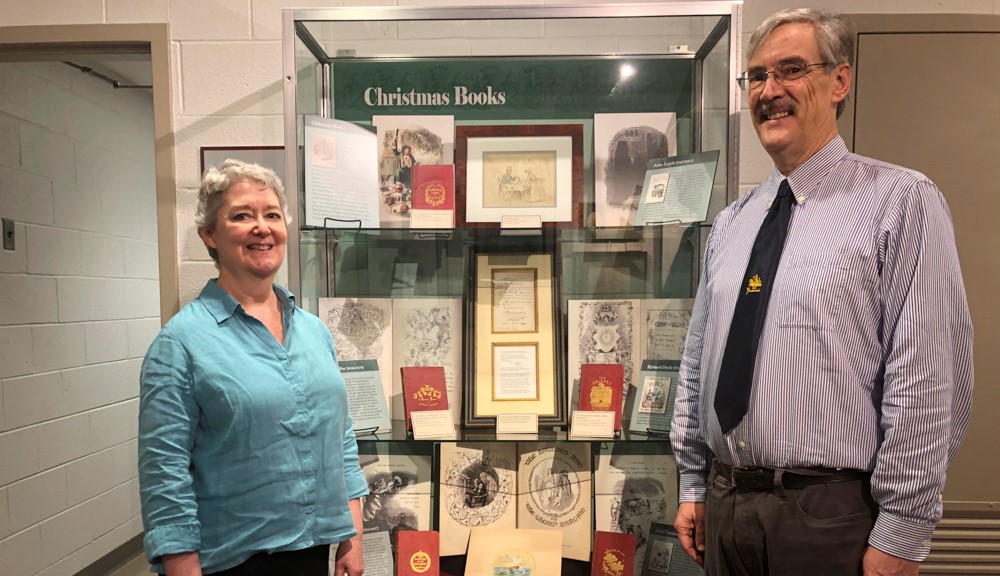
In the spring of 1836, a young, virtually unknown writer named Charles Dickens began a literary adventure that was to revolutionize the publishing industry. With the release of the first monthly installment of the novel The Pickwick Papers, Dickens kindled the explosion of serialized fiction, a publishing model that made literature more affordable and created a mass audience for books. Dickens would go on to write and publish all of his 15 novels in serial form, most in monthly parts packaged with illustrations and advertisements.
Now, 200 years after Dickens's birth, a project at Worcester Polytechnic Institute (WPI) is using the Internet, another "experiment" that radically changed publishing, to give modern readers and scholars the ability to experience the novels of Dickens in their original, serialized form. The first phase of the initiative, dubbed "Project Boz" after Dickens's pen name (dickens.wpi.edu), is nearing completion in WPI's Gordon Library. Fittingly, the recent acquisition of the original serialized parts of The Pickwick Papers has played a pivotal role in moving the effort toward a successful conclusion, according to Joel J. Brattin, professor of literature at WPI, noted Dickens expert, and honorary curator of WPI's Robert Fellman Dickens Collection.

"When we started this project three years ago, I never imagined we would actually be able to digitize every one of Dickens's novels in their original serial parts, certainly not within such a short period of time," Brattin said. "In 2009, the Fellman Collection owned 12 of the novels in serial form. It can take years and a considerable investment to locate and acquire serial parts in complete form and in good condition, but thanks to the diligence of the Gordon Library's acquisition and preservation staff, we now have the remaining three novels, with The Pickwick Papers joining the collection this fall."
Project Boz, funded during its first three years by a Library Services and Technology Act grant administered by the Massachusetts Board of Library Commissioners, is unique among efforts to create digital version of Dickens novels in that it is digitizing the pages of the novels as images (in searchable PDF form), so visitors to the site can not only read the text, but can also see how the text was set, enjoy the illustrations, and browse the period ads.
"We set out to give the reader a unique experience," said Kathleen Markees, preservation librarian, who co-directs Project Boz with Lora Brueck, assistant director of collections. "We wanted to offer everyone the opportunity to encounter these novels as Victorian readers did. Looking at the high-resolution scans we've made of the text, the delightful illustrations (which are not always included in modern printed editions), and the ads from publishers, tailors, apothecaries, and other merchants, is the closest you can come to experiencing these rarely seen serial parts short of holding them in your hands."
To date, all but three of the novels—The Pickwick Papers, David Copperfield, and Martin Chuzzlewit, all of which were acquired over the past year—have been digitized and most are available for browsing on the Project Boz site (Barnaby Rudge will be added soon). Most were published in monthly parts, though four (The Old Curiosity Shop, Barnaby Rudge, Hard Times, and Great Expectations) were published as weekly serials in magazines that Dickens edited. A Tale of Two Cities was published in both weekly and monthly forms; Project Boz has the weekly installments, and the Victoria and Albert Museum in London has volunteered to digitize its set of monthly parts to add to the site, Brattin said. When complete, the site will host about 350 parts, totaling about 4,000 text pages alone.
"Charles Dickens would have turned 200 in 2012," Brattin said. "The world has spent the past year celebrating his genius as a writer and a storyteller. But it is important to remember that he was also a great innovator and entrepreneur who understood the power of serialized fiction and became the master of it. Other writers, including Thackeray, Trollope, and Eliot, jumped on the serialization bandwagon, but only Dickens understood how serial publishing could expand the market for fiction by making literature accessible to people who could not afford to buy whole books. He then expanded the revenue-generating potential of literature by turning it into a vehicle for advertising. Even two centuries after his birth, that seems like a very modern business model."



